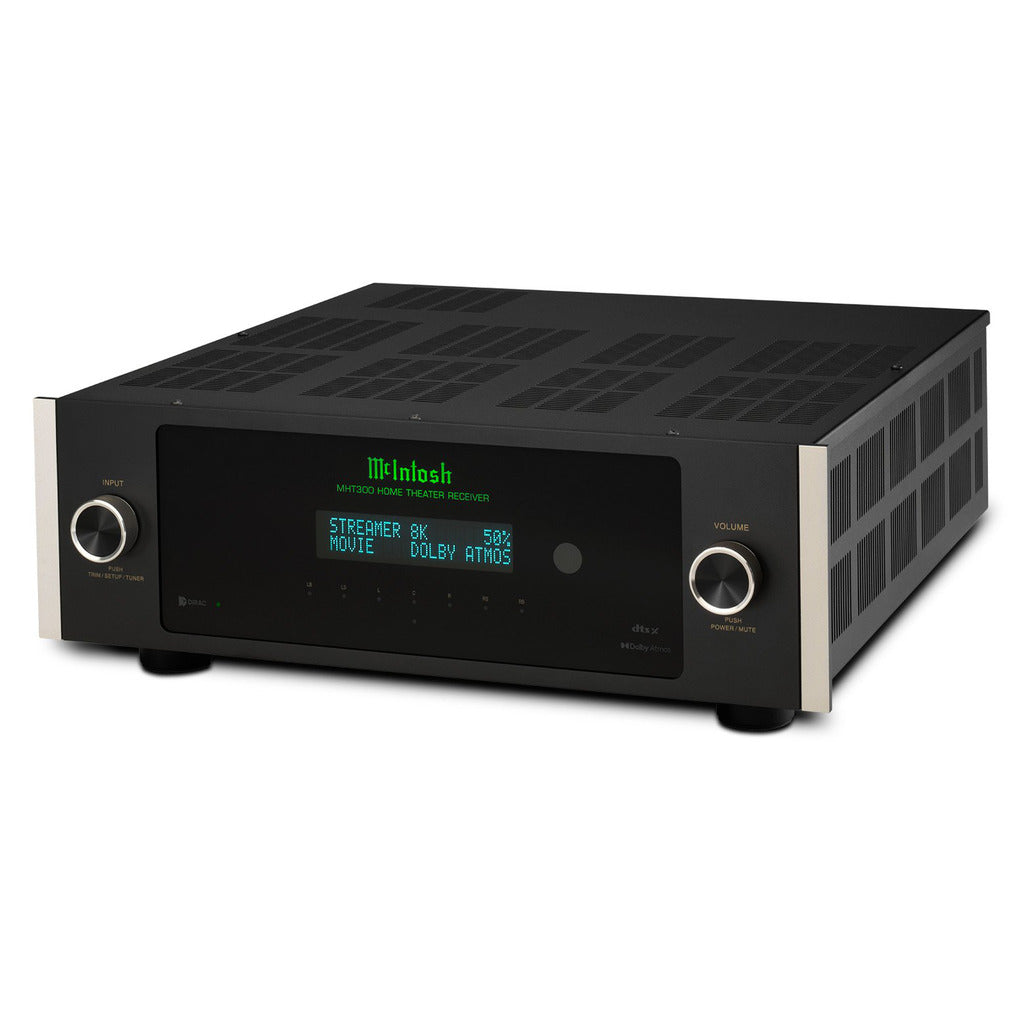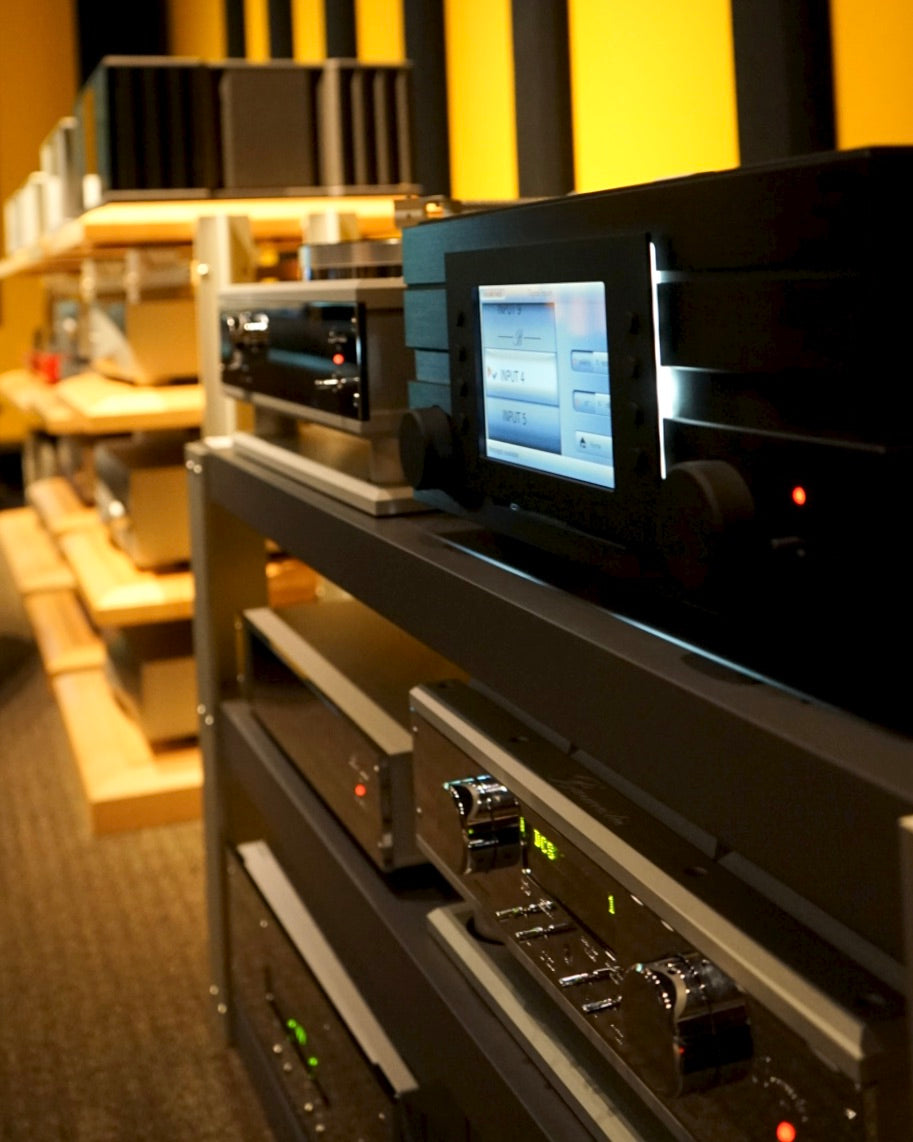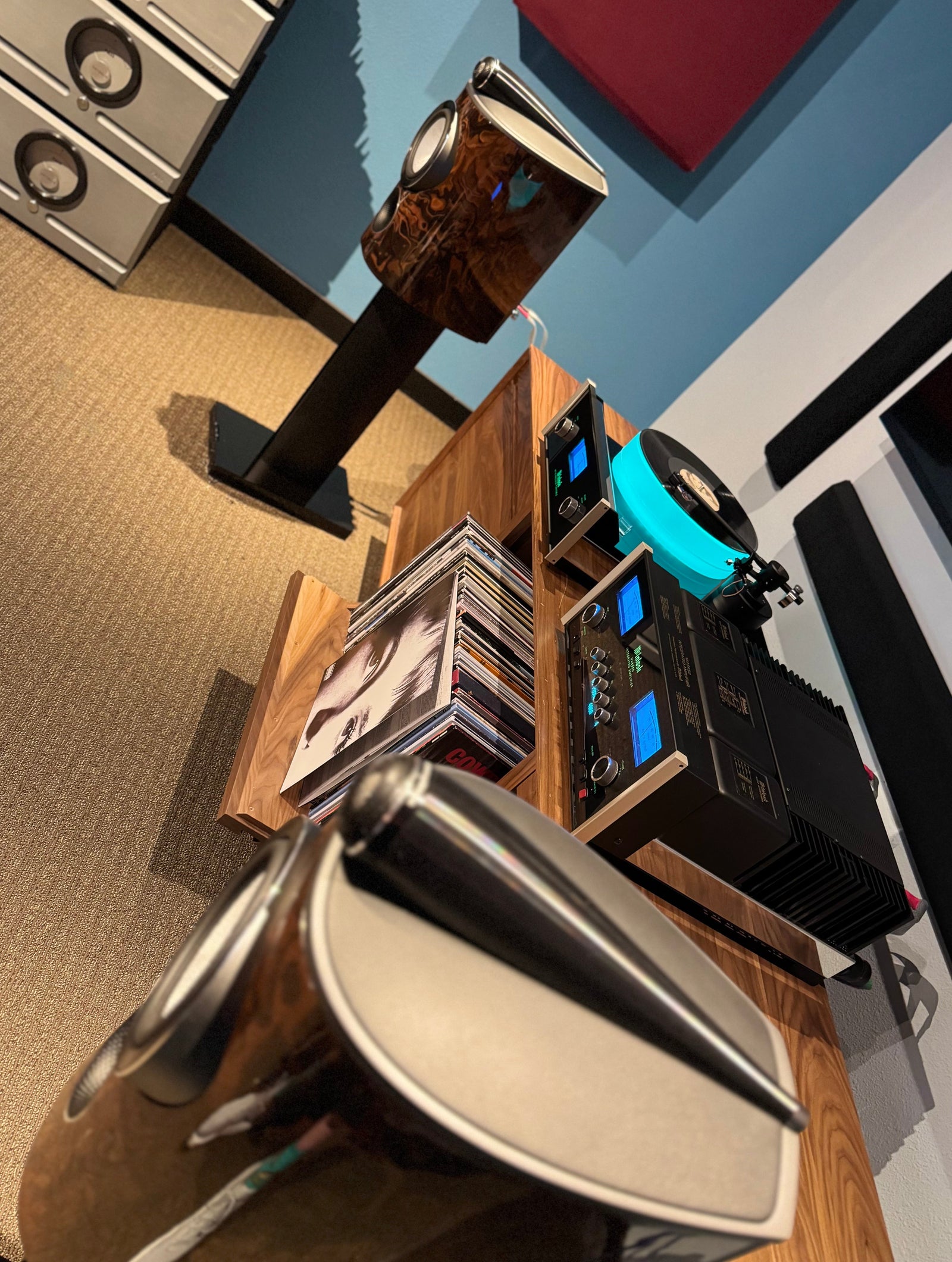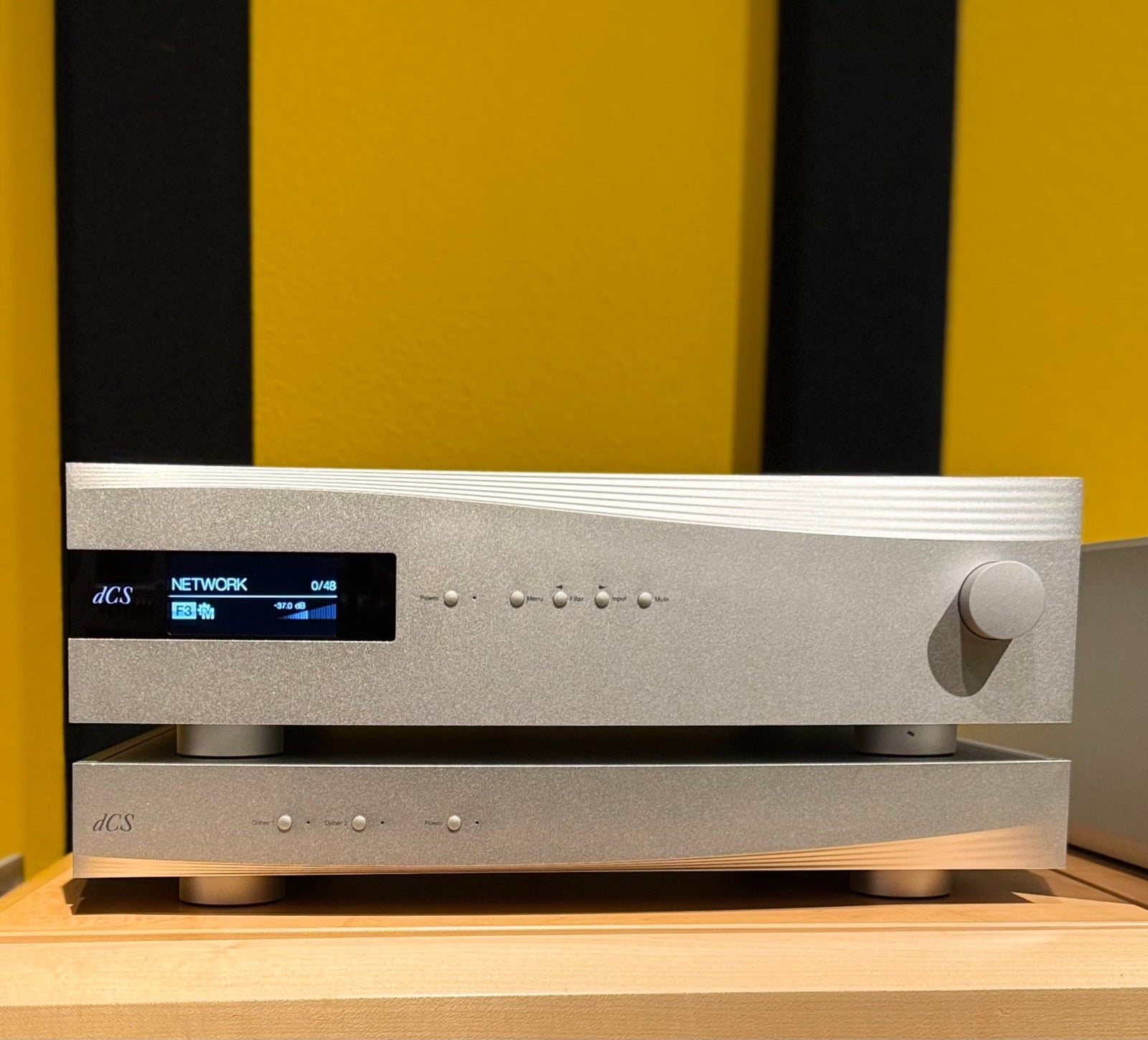McIntosh MHT300 Home Theater Receiver Announced

Today McIntosh announced their first home theater receiver in almost two decades. The last McIntosh theater receiver was the MHT200, which graced Pearl Audio's shelves almost twenty years ago when the BMW E46 M3 was still a new car. We sold several of them and found they were just the perfect setup for many customers who wanted McIntosh performance, but not the space and expense of of a two-box processor and amplifier solution like the then current McIntosh MX135 and MC207.
This most recent McIntosh MHT300 ancestor, the MHT200, was discontinued around 2008, and we greatly missed it as a perfect solution for one-box McIntosh theaters.
Why did the McIntosh MHT200 go away, and why so long a wait for the MHT300? Well, the truth is, it was already really big, and really heavy, and adding more channels/power would have made it humongous and too-heavy. The old MHT200 was about 75 lbs and as big as a McIntosh 400 watt two-channel stereo amp (think MC462), which is pushing it for most theater owners to move around on their own. Most triple-wide home theater furniture shelving would struggle to accommodate it. The MHT200 had 5 channels at 75 watts each. To make something with more power per channels and more channels would have simply exceeded the reasonable size and weight for real-world use.
Why did the MHT300 finally get built ? Enter digital theater amplification from McIntosh's MI series amplifiers. At Pearl Audio, we've been selling a lot of McIntosh's entry level MX100 processor paired with McIntosh MI347 7-channel amplifiers as a compact/cost effective setup. The MX100 is 2U (rack units) in height and the MI347 is 3U, total 5U, which combined gives near receiver sized height/weight. The MX100 relies on streamlined digital-only inputs and XLR-only amplifier outputs, making it compact and cost effective.
McIntosh MX100 Processor
McIntosh MI347 Theater Amplifier
Until now, the MX100/MI347 was the smallest and most cost-effective offering for a McIntosh theater.
Physically, the new MHT300 takes the basic idea of the MX100/MI347 above: compact processor and compact digital amplification 7-channel theater amplifier, and goes one further by combiningthe two into one chassis. Now with the MHT300, you have 7-channels of 120 watt amplification combined with state-of-the art theater processing, all in one compact 3U chassis.
McIntosh MHT300 Home Theater Receiver
Looking around the back of the MHT300, we see something missing:

Looking at the photo above, notice there are no XLR output cables. This is because both the theater processor, and theater amplifier are now in one chassis. No need to run XLR cables from one box to another. What replaces the XLR cables, of course, are speaker cable terminals - seven sets of them, so unlike the old 5-channel MHT200, the MHT300 can run a full boat 7-channel high performance home theater with three channels in the front, two on the sides, and two to the rear. You can still run just five channels if you wish, but seven does give you more a sense smooth front-to back motion in films when something swooshes by on-screen.
When you connect up the MHT300, this is a small point, but it illustrates McIntosh's design chops, you just connect all of the speakers in a nice straight line along the bottom of the MHT300, so all the cables just drop right down the cabinet with no bunching of cables, and you don't need as much depth if you use spade connector speaker terminals. It just looks nicer, is easier to connect, and takes less cabinet depth. A common hookup for the MHT300 would be to run your cable box into one of the HDMI 1, Apple TV into HDMI 2, HDMI-eARC to TV then speaker cables. Simple and incredibly low cable mess. If you use only internet smart TV sources, you can just connect a single HDMI-eARC cable from TV to MHT300 and you're done.
If you want a larger setup, the MHT300 does indeed have outputs for two subwoofers, outputs for two height channel amplifiers, and both in and outs for the 7-channel - those terminals right above the speaker terminals - you just pull the horizontal black bridge connectors between IN and OUT off. Why both in/out for the 7-channel part? The 7-channel out(s) are of course for those who have an external amplifier, most commonly a big stereo amplifier like the mighty McIntosh MC462 driving big front speakers. The 7-channel in is a bit more subtle:
At first glance one might think the MHT300's 7-channel in is only for the scenario where, ten years from now, a newer-new-fangled theater processor separate comes out, and you want to not use the MHT300's built-in processor, but keep using the MH300's 7-channels of amplification. Terrific flexibility to have.
The MHT300's HDMI out has a lovely feature that we only dreamed of in the days of the old MHT200, which is HDMI-eARC. What is HDMI-eARC? It stands for enhanced Audio Return Channel. Basically it means that your TV can send audio and information to the MT300 over a single HDMI video cable connecting them. What information? Volume control information. If you use your TV remote's up/down volume buttons, your TV will send those up or down volume pushes through the HDMI cable, to the MHT300 and turn its volume up and down. This will also work if you've configured your cable-box remote (Comcast in my home) to raise or lower your TV's volume (i.e. the Comcast remote will turn the MHT300's volume up/down). Back in the day, providing this desirable feature meant we had to introduce a custom-programmed theater remote, and a programming bill big enough to buy a new espresso machine.
HDMI eARC also lets your TV be the source to the MHT300. HDMI eARC sends all the sound from your Smart TV content to the MHT300. 
The MHT300 also has a host of new technologies on the processor side.
MHT300 Highlights include:
8K Processing - yup, a nearly useless features today, unless of course you're a video nut and have 8K files hosted on your computer. Tomorrow or some-day however, we're going to see 8K video over cable - mark my words!
RS232 and Trigger in/out - not new, but extremely useful for integrating the MHT300 into a bigger McIntosh or whole-house control system such as Crestron or Control-4. No Crestron or Control-4 in the house? McIntosh trigger allow you to directly attach to other McIntosh components to each other using simple McIntosh control cables. With trigger cables attached, you can have your entire multi-component McIntosh system turn on or off all at once, from one push on your remote.
FM Tuner What? A theater processor with an old-school analog FM tuner? If you absolutely LOVE your KMHD radio this is quite the boon. No iPhone or computer or apps to deal with pre-coffee, just switch the MHT300's input to FM Radio. The MHT300 does of course also support internet radio...
Internet Radio Access any internet based radio station, from anywhere in the world. Paris Jazz stations anyone? Mais oui!
Dirac Live Room Correction Dirac Live is the darling of the industry for room correction - so you can tune your theater to your room.
HDMI HDCP 2.2 Latest/greatest 18Gps HDMI, needed for HDR formats, Dolby Vision etc.
HDMI eARCYour TV's volume can control the MHT300 + supports current high-resolution formats DTS-HD Master, True HD, Atmos etc.
32-bit DACS Better sound through state-of-the-art DAC chips.
The Latest Video Formats DTS-HD Master, True HD, Atmos, HDMR10, HLG, 4:4:4 color spacing, 3D pass-through.
Coax/Optical Good for integrating with old-school optical output TVs, Bluesound music streamers, CD transports, and older CD/DVD players.
That's it! Pearl Audio has some MHT300s on-order. We will be adding an arrival blog post, and adding MHT300 to our McIntosh in-stock offerings above when they arrive. We do take deposits on MHT300, with first units arrival slated for March. Call us at (503) 222-2599 if you have any questions or to reserve yours.
Cheers,
John





